Wounded Knee DeOcampo
On Wednesday, June 22nd, a speaking and film screening event
entitled “Protecting Glen Cove” was held at the Vallejo Naval & Maritime Museum in downtown Vallejo. Many Vallejo residents were in attendance, including residents of the Glen Cove neighborhood. Young Ohlone, Pit River and Mexica singers from the ongoing prayer vigil at Sogorea Te opened and closed the evening with songs accompanied by clappers and a hand drum.
Sogorea Te singers
Andres Cediel introduced Shellmound, a documentary film he produced about the destruction of the Emeryville Shellmound, upon which the Bay Street Mall now stands. A KTVU television segment about the “necropolis” of over 11,000 Native American remains underneath the Hearst Gymnasium at UC Berkeley was screened, and Rebecca Ruiz-Lichter shared an extended version of her recent short film, “The Spiritual Encampment at Glen Cove".
Following the films, Wounded Knee DeOcampo (Miwok) and Corrina Gould (Ohlone) spoke passionately about the importance of protecting the burial and sacred places of their ancestors. Their words have been transcribed, below:
Transcripts and Audio Clips
Part One: Wounded Knee DeOcampo, Miwok Elder
Good evening. I want to thank the Creator, for watching out for each and every one of us.
It really hurts my heart, and my spirit, to see my ancestors locked up in gym lockers and cardboard boxes. It could be your ancestors. And my question to you: What would you do, if they came for you in the morning? What would you do? As earth people on this earth, to protect the spirit of your ancestors – what would you do?
It saddens me that the GVRD and the City of Vallejo wants to come and dig up our ancestors. As indigenous people of this country, we have done many, many things to honor the people that came to this country. To watch out for them, to take care of them. And all we’re asking is to protect fifteen acres of something that’s very sacred to indigenous people. So I ask you to support us to protect this sacred burial ground of our ancestors.
The City of Vallejo and GVRD are in violation of Civil Rights, Human Rights, Hate Crimes under H.R. 1913, and it could be a violent act, by the City of Vallejo and GVRD. Because, I’ll put it this way. If I was to go over to their cemetery and desecrate their sacred site, what would they do to me? So we ask you, in a spiritual way, to come and join us to protect this sacred site of our ancestors.
I had a person come up to me and ask me — There’s no discrimination here, I’m gonna speak the truth. It was an African American person, a black person. — And he told me, he said, “Wounded. You need to roll over. Give up.” You know what I told him? I said, Martin Luther King did not roll over. If he had, you may not be standing here today, as an earth person. I must speak the truth here.
I know many, many people in this city, and we need your support. We need you to come out and visit the site. Come down, and listen to them prayers. Come down and join us.
I have my two friends that come down there every day sometimes. And they’ve been my friends for many, many years. My friend Albert, always been my friend. And my friend Foster Hicks. “What do you need Wounded?” Well, we need water, we need ice, we need food. And they answer the call. Because they know the struggle of what happened to their [African] people.
So I ask that you feel the pain of what is going on with Indian people today. You must feel that pain. Because we still feel that pain, about what happened to indigenous people of this country. We have been genocided. It’s nothing new to indigenous people. We know what weapons of mass destruction is. We know what torture is. We’ve been through that.
And so when we ask you to come and support us to protect this sacred site, the last 15 acres. What if you ancestors were locked up in cardboard boxes in gym lockers? I ask that question to you, what would you do? I think you would do the same thing, as indigenous people. Stand up. Stand up, and battle, and fight.
I want to thank each and every one of you for coming, and joining us, coming to the sacred site. I want to thank my friend Michelle for coming, in a time of need of indigenous people. I want to thank my friend Mark from Oklahoma, for coming, and standing up, and speaking for indigenous people. I also want to thank my brother Tino, who always been down to the site. And I want to thank the singers, that sing that spiritual message every day. Because we need that prayer. Prayer helps.
Because one day, you’re gonna ask the Creator to help you. I have always said this: don’t wait till somebody gets sick to go visit them at the hospital. Go visit that person now. Don’t wait, to give your kisses goodbye. You’re here today.
I want to thank the singers. I want to thank my wife, who always supports us. I want to thank my friend Wolf, who brings us something to eat every day. Sometimes there is nothin’ to eat. Its been 70 days. And we will continue to fight and battle, to protect Sogorea Te.
So we need your help, to come there. We need you. I’m pleading with the community, I have pleaded with GVRD, to not desecrate that site. Did they listen to us? No, they did not.
I have walked around the Bay Area with my sister, Corrina. And I’ve seen caps. The [Emeryville] mall is a cap. Swimming pools on top of our ancestors. Apartments, homes, trails, freeways. And you know what? They want to build a church on top of them now. And you know where that’s at? Its up along the freeway between Vacaville and Fairfield. The name of the church is New Life Church. I know, because I’ve traveled this country.
I’m here to speak the truth. GVRD has given us jargon and rhetoric. That’s what they did in the 389 treaties. They give us jargon. They look you in the eye and tell you a story. All they’ve got is stories.
So I ask you, to come to that place. To Sogorea Te. And when you come there, offer your prayer, to your ancestors. And I guarantee you, you will feel that spirit. You will feel that spirit. It will run through your body like you’ve never felt before in your life. That is the spirit of our ancestors.
So I want to thank each and every one of you tonight for coming. For listening to our plea. I want to thank each and every one of you, for coming. I hope to see you down there. Whatever you can bring us, water, or your prayers.
Prayer is keeping us going. Because you know why? We as indigenous people have spirit. We believe in the Creator. We believe in the helpers that will come and help us. Cause they’re gonna come from the East, the West, the North and the South. And they’re gonna help us, to defeat these people.
I don’t know what’s gonna happen down there. Only one spirit knows that, and that’s the Creator. Come down there and support. That’s all I ask. Thank you very much. And may the great spirit be with each and every one of you.
Part Two: Corrina Gould, Karkin and Chochenyo Ohlone
[Greets the audience in Ohlone]
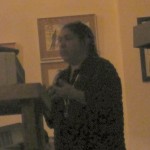
Wounded and I started working together about 10 years ago, and he had a whole bunch of people working with him before that. I helped to start an organization called Indian People Organizing for Change, and we started doing work in the Bay Area, about a whole bunch of different issues that Native people were facing in urban settings.
One of the biggest things that started happening was that my ancestors began to make themselves known. Quite a bit. And we met around the Emeryville Shellmound stuff, and going to that, and going to city council meetings and stuff like that.
By a show of hands, who all lives here in Vallejo? Alright cool. Who all lives in the Glen Cove area? Cool. Who has been to Sogorea Te, at the vigil? Nice! Thank you.
I want to thank everybody for their support in coming out tonight, and I also want to thank Andres for that wonderful movie that has helped us to explain shellmounds to a lot of people, and development stuff. It’s a very powerful movie that has helped us to talk about this in settings where people don’t know about what shellmounds are in the Bay Area, so thanks Andres for coming through again and helping us out with that. I also want to thank a really great person, Rebecca, for putting together a wonderful film in just a short amount of time, that talks about the story of what we have been doing down there for the last 70 days, thank you Rebecca. (claps)
I guess one of the things I wanted to talk about was how the struggle happened. It wasn’t like 70 days ago all of a sudden a group of us decided to pop it in our heads that we wanted to take over and occupy the land in a prayer vigil. But that this has been an ongoing thing that’s been happening, that Wounded and a bunch of people here in Vallejo started working on twelve years ago when they found out that the development was going to happen at Sogorea Te. And I had been helping and assisting, trying to figure out how to do this.
That meant we went to a lot of City Council meetings, and we went to a lot of GVRD meetings, and we got a lot of letters written. We have done a lot of walks, trying to get the information out to the general public about what was happening here and why it was important for us to take a stand. And we had individual meetings with the GVRD board there and people that were in charge, asking that they not desecrate this site and telling them why it is important.
One of the hardest things that I learned during this process was that, we were going through the Environmental Impact Report process. When someone wants to develop something, they have to put together this thing on how its going to affect the environment and all this other stuff, and generally they have to do something around how its going to affect any historic or prehistoric places.
And so meeting after meeting while the EIR process was happening, we went and pleaded with the GVRD board and asked them not to desecrate our ancestral cemetery. And one of the hardest things that happened was that, when the draft EIR came back in written form, it has all the comments people made, letters that were written, and the responses to that stuff. And every single time that somebody spoke on behalf of Sogorea Te, the response from GVRD said that it is not of anything to do with the EIR report or “no comment required”. We had letters written from as far as Sweeden and Japan asking GVRD to please reconsider this plan. And every single time that draft came back it said “no response necessary”. “It doesn’t apply to the EIR.”
So that was one of the biggest and hardest lessons that I had to learn. Because this does affect everywhere that we live in the Bay Area. Over 425 shellmounds, cemeteries of my ancestors. They talk about being capped, you know, they talk like that’s a great thing.
One of my great friends that I’ve worked with for over 10 years has been Perry Matlock. He and a woman named Stephanie Manning started doing work around shellmound issues before I even go involved in it (and they’re my ancestors). But it was about protection of these sites.
Stephanie Manning did this really great stuff about making it a historical monument in Berkeley, one of the oldest shellmounds around, in Berkeley, and it sits across from Spankars on 4th. And because it sits underneath somebody else’s property, they got that overturned. So now its not that designation anymore. They sued the City of Berkeley over that because they didn’t want that designation.
You know, to watch Emeryville happen, and to know that, you know, this huge monument of my ancestors wasn’t going to be there anymore. These were monuments in the Bay Area, huge things. The Emeryville one was on an 1857 Coast Survey map, right. So you could see it as you came in to the Bay, as a point of reference. Huge places, right. But those things don’t exist anymore.
When you go to those places, like Perry would say, when you go to those other places in the world…you can see the Pyramids, you can touch and feel that. You can go to stonehenge and you can touch and feel that. You can know what it is to see the past. But when you come to the Bay Area, what do you get to see? The Golden Gate. You get to see a little hill with a lump and an iron basket on top of it that’s supposed to designate thousands of years of my ancestors’ culture.
And so, then, we just couldn’t do this anymore. Every single place, just about, that was on that map that was created in 1929 has been desecrated with a “cap”. And they consider this OK. We just couldn’t do that anymore.
Its our responsibility to make sure that we pass on the history and the legacy of our ancestors to our children and our grandchildren. And so that’s why this fight in Vallejo, at Sogorea Te is so important. Its not about anything that you’ll hear about inter-tribal conflict. Its about doing the right thing. And its about human beings coming together, no matter what background they are, to do that right thing. For our ancestors, and for our children, and for our children’s children, and our children’s children’s children. And so that’s what we have to do. But there has to be a place that we can come, close to the water, and we can say our prayers, and we can lay down our tobacco, and we can do that in a good way.
Its not just sacred to us. One of the great things that we found out was that two months before we decided to occupy the land in a prayerful vigil, there was a woman who lost her husband, two months prior. He was my age, she lost him to cancer. And she took his ashes and she buried them at the edge of that land, because she felt a spiritual connection to that.
And that’s whats important, that human beings feel that spiritual connection there, and that that’s OK, and that we as human beings can say that’s OK, and we don’t have to have to have pavement, and we don’t have to have all that other stuff. I mean, Glen Cove is like right up against the land, you know. Folks can walk outside and they can see and hear the water. They can see places and things, their children can come through. People use that place all the time. People are fishing, and bringing us fish while we’re there. And they’ve been doing this, not just recently, but for thousands of years people have been using this cove for just that thing. For a gathering place, a place to share stuff. And that’s all we want.
We’ve been here for 70 days now, to say that its OK for us to stand here. That its OK for us to protect this site. And its OK for all human beings to be there at the site. Not just Native people. And we need to know that – that its OK for us to be warriors.
People have this image of warriors and fighting and stuff like that. But this is the real fight. Its a spiritual fight. Its a fight for us to be human beings. Its not a fight in which we’re going to go down in death. But its a fight that’s killing our insides. Because we as human beings need to have that connection to the Earth.
And so when Wounded asks us, can you come and support us…we’d love to have you come down there. And to bring people down there to share this. Because its a piece of history for all of us to share. Its tangible.
You know, theres parks all over the City of Vallejo. I think there’s like 27 of them or something like that. GVRD has a responsibility to take care of all of these parks. When we first got there, we pulled out over 350 pounds of trash, because we needed to do that. As stewards of this land, its our responsibility. Not just as Native people, but as everybody, its our responsibility to do that. Its our responsibility to take care of those freshwater creeks down there, to make sure that plant life is OK. And its our responsibility to clean up this strait, so that we can eat more than one time, the fish out of there once a month. Its our responsibility as human beings.
That’s what this fight is about. Its about protecting those ancestors because everybody has a right to be placed in a place forever. When we put our ancestors down, whether they’re recent ancestors or long time ago ancestors, we have a right to know that they are there forever.
And this community, this society, needs to be able to say that enough is enough. That we don’t need to pull any more people out of the ground. What I tell people is that all of us, when we loose somebody that’s close to us, we have those ceremonies that we can put people down. We have those prayers and rituals. It doesn’t matter what background we come from. But we don’t have those prayers and rituals to bring people up. Because we were never supposed to do that as human beings. A resting place is forever. And that’s what this place is.
For thousands of years and many many generations, this has been a resting place for folks. And so when we go there, and we say our prayers, that’s what its for. And we invite people to come and experience that with us. Not just now, but forever that we can say that.
And we can say that we were all warriors, and a part of making sure that this place stayed in the way that it should be. 15 acres of development. Do we need that? No. Do we need more roads? No. I think people use that land rather well. And its been used like that before GVRD decided to come up with their plan for bathrooms and a parking lot.
I think this land was calling out to all of us, city residents and people from afar, to come together, so that we can say no. We can say no now, and later on, when there’s other things that come up, we can say no then. And we can know that we banded together around something that was a good cause.
And so on behalf of my ancestors, and my children, and one day my children’s children, I ask that you guys come and support. That you bring other folks down with you, so that they can see that too. And that you tell GVRD and the City of Vallejo that its OK for them not to do this. As human beings we don’t have to do this. They can take care of the other 27 parks in the City of Vallejo. And we will be OK.
Short films from the evening
Berkeley’s Bones: A KTVU Television Segment
A televised report about the “necropolis” of over 12,000 sets of Native American human remains at UC Berkeley, kept in gym lockers and filing cabinets below the Hearst Gymnasium. Ann Marie Sayers (Ohlone, of the Indian Canyon Band) appears in the film, visiting the basement where thousands of stolen skeletons and artifacts are kept in abysmal conditions. Her visit may have been the first by any living Ohlone person. Among the human remains and sacred objects imprisoned here are many that have been removed from the Glen Cove Shellmound Burial Ground (Sogorea Te) in Vallejo.
The Spiritual Encampment to Protect Glen Cove
A short film-in-progress by Rebecca Ruiz-Lichter. Includes footage from interviews with Morning Star Gali (Pit River), Corrina Gould (Ohlone), Wounded Knee DeOcampo (Miwok), Fred Short (Ojibwe), Michelle Steinberg and Mark Anquoe (Kiowa).
Trailer for Shellmound: The Movie
Andres Cediel introduced Shellmound, a documentary film he produced about the destruction of the Emeryville Shellmound, upon which the Bay Street Mall now stands. DVDs of this film can be ordered from the film’s official website.

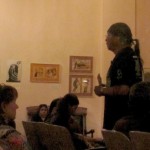
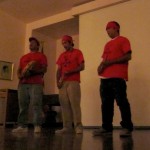
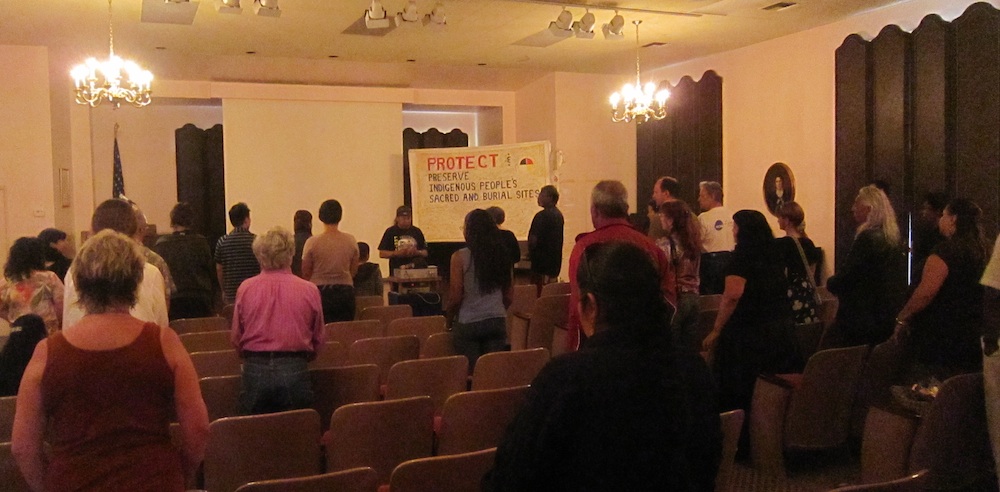
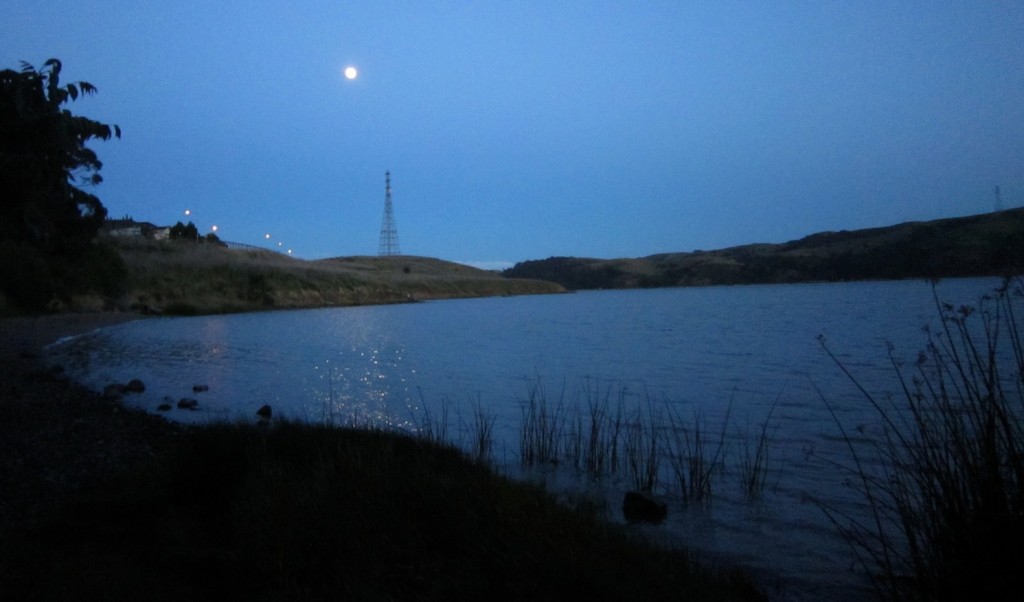
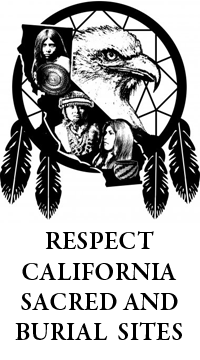


I would like to apologise to the Indian Nations for what the white man and others have done to you for decades and more years than I care to remember.The driven force of all of what has happened to you has been greedy people wanting what is not theirs and never will be.The Great Indian Nations are the only peoples who recognised the true worth of living from the land and only taking what was really necessary and then putting back into the land so that Mother Earth could replenish herself to feed others.I only hope and pray that your ancestors will be allowed to rest in peace and my prayers are with you always.God Bless each and everyone of you. xxx